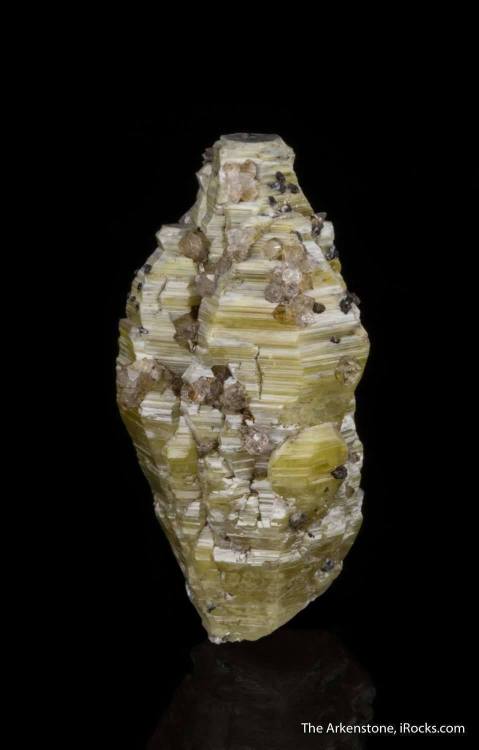An exotic rarityMost minerals are composed of bonded elements, usually featuring one or more metalli
An exotic rarityMost minerals are composed of bonded elements, usually featuring one or more metallic components electrically linked by sharing or exchanging an electron in the outer shells of the atoms concerned with a non metallic component. Common examples include oxides, silicates and carbonates, and the resulting crystals are determined by the constituents present in the original geological ichor combined with the conditions of precipitation and crystallisation. Rare minerals tend to be so because the geological conditions for their formation seldom occur, either because some elements seldom occur together (such as the beryllium and chromium necessary for emeralds) or due to a complex chemical formula.Weloganite is one of the latter, only found at a couple of places on Earth. It is a carbonate like calcite or aragonite, but the essential metals for it to exist include sodium, strontium, calcium and zirconium. It was only discovered in 1967, turning up in the Francon quarry in Quebec, and gets its name from a pioneering Canadian geologist. Colour is white to yellowish amber, and crystals often have a hexagonal cross section (though these are twins, interpenetrant crystal lattices) and bulge outwards in the middle of the length while horizontal striations cover the faces. Like many carbonates it is soft, a mere 3.5 on Mohs scale, and not suitable for gem use though some fairly translucent examples are known.In the type locality it is found in a carbonatite sill, a frozen carbonate rich magma (see http://bit.ly/2j8MEm4) that crystallised horizontally between two layers of country rock. The other location is a section of one of the largest intrusions on the planet: the Bushveld in South Africa. It has a couple of interesting properties, generating an electrical charge if heated (called pyroelectricity) and giving off blue light when the crystal is broken as the snapping chemical bonds give up their surplus energy (known as triboluminescence). The 3.5 x 1.8 x 1.8 cm specimen in the photo comes from the type quarry and includes some tiny associated calcite crystals, and is at the larger end of what’s available to the collector.LozImage credit: Rob Lavinsky/iRocks.comhttp://www.mindat.org/min-4266.htmlhttp://bit.ly/2k96KKB -- source link
Tumblr Blog : the-earth-story.com
#weloganite#mineral#crystal#geology#chemistry#zirconium#sodium#strontium#francon#quarry#quebec#canada#canadian#carbonate


